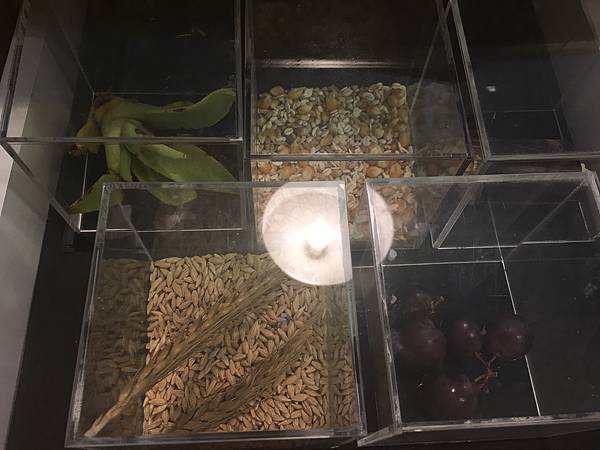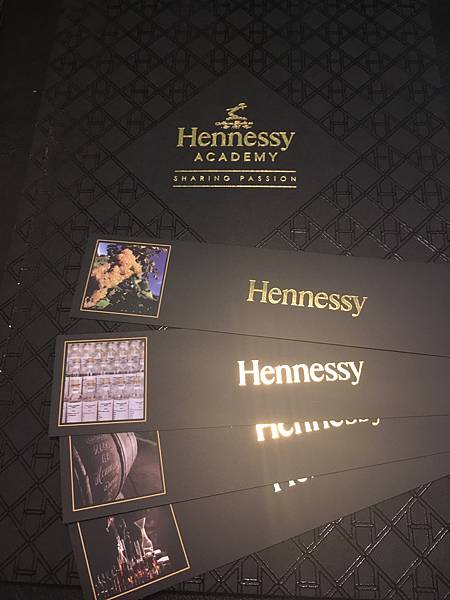Preface:
In recent years, more and more people fall in love with natural wines. They claim drinking natural wines is healthier than commercial wines (use conventional farming). For example, less artificial chemicals residue, lighter hangover and so on. In September, Shin asked me if I can provide any opinion about “natural wine” based on my scientific background when I ate lunch with my friends in his restaurant. Frankly speaking, I have limited experience about natural wines. To avoid any ideological argument, I try to survey relative activities and resources to obtain more knowledge/introduction about natural wines. It is so lucky that two activities “does biodynamic really matter” and “Buvons Natura” are held in November.
Let’s talk about this activity “does biodynamic really matter”: it is held by Sunshine Town. A senior wine marketing expert Anna Lucic was invited to share her experience and opinion about different wines. In this activity Anna began with the definition and fermentation process. So I follow her thinking model to give more explanations.
Discussion
Vineyards
At first, let’s see the definition. According to Table 1 [1-4], we can separate two parts to discuss: vineyards (grape growing) and wineries (wine making). The most difference in vineyards among commercial wine, organic wine and biodynamic wine are farming. For example, in comparison with conventional farming, farmers choose not to use pesticides, fertilizers, genetically modified organism, antibiotics and growth hormones to produce organic products. These farmers firmly believe that organic method is more environment friendly, especially for soil, plants and people. To discuss furthermore, I found some scientific investigations about conventional, organic and biodynamic farming.
Crystal Smith-Spangler et.al [5] tried to summarize the papers about organic & conventional products, which were published in the period of 1966 to 2009. In this paper, comparative health outcomes, nutrition, and safety of organic & conventional foods were discussed. Some interesting conclusions were found: 1. Conventional produce has a 30% higher risk for pesticide contamination than organic produce. But it is still unclear in the clinical significance because the difference in risk for contamination with pesticide residue exceeding maximum allowed limits may be small. 2. Both organic and conventional animal products were commonly contaminated with Salmonella & Campylobacter species. Organic produce has a higher risk for contamination with E. Coli if animal waste was used in the farm.
L. Carpenter-Boggs et. al [6] investigated the soil biology of organic and biodynamic management. The results indicated that both organic and biodynamic farming would increase soil microbial biomass, respiration, dehydrogenase activity, MinC, earthworm population and biomass. But there is no difference in the soils fertilized.
Daniel Granato et. al [7] further investigated the characterization of conventional, biodynamic, and organic purple grape juices by chemical markers, antioxidant capacity, and instrumental taste profile. They found the juices from these three crop system have no statistical difference in chemical composition.
In short summary, these investigations demonstrated that conventional farming truly has higher risk for chemical contamination, but this point has not been proved in clinic. Conversely, Organic farming may result in higher risk for contamination with E. Coli. Meanwhile, organic and biodynamic management truly resulted in more biodiversity. However, these farming methods have no significant effect on the grape juice.
Winery
After discussing the vineyards, let’s talk about the wine making in wineries (here we only discuss commercial wine followed the laws/rules in old world, organic wine and natural wine).
Using the point of chemical reaction to see wine making, no matter which farming is used in the vineyards, the only chemical reaction of wine making is glucose converted into alcohol by yeasts. In this process, the main difference among commercial wine, organic wine and natural wine are artificial additives. For many commercial wines, chemical additives are allowed to use to mass produce qualified wines. In USA, wine makers can add more than 60 legal additives in the wine [8]. Most of these additives are also allowed to use in EU. Common chemical additives in wines are sulfide, cultured yeast, tannin, sugar, and chemicals used in fining & clarification [9]. Conversely, organic and natural wine makers emphasize that they don’t or just add very limited additives in their wines, which may produce healthier wines. They even claim that these chemical additives would result in some symptoms like allergic reaction, hangover and so on. Additionally, these wine makers also emphasize these “nonchemical intervention” would be more natural and could reflect terroir faithfully. However, it's crucial to note that "nonchemical intervention" doesn't mean an absence of intervention entirely. Wine growing and winemaking across all categories is precise, painstaking labor, and it's extraordinarily so in natural wine [10]. The natural terroir actually include flaws as well.
Since many people criticize these additives, I would like to discuss two common additives here: sulfite and cultured yeast.
Sulfite: Sulfite (SO2) began to be added to wine in the late nineteenth century, following the emergence of the petrochemical industry. Sulfites are used for several purposes throughout the winemaking process; they kill unwanted bacteria, prevent spoilage by bacteria, inhibit the process of oxidation, serve as a stabilizer in bottles of wine and keep wines fresh. The medical research has demonstrated few percentage people have allergy to sulfite. Table 3 is the concentration (ppm) of sulfites in food and beverage. As can be seen in the table, if these people who claim the sulfite in wine would lead to their uncomfortable body reaction, then they can’t eat freeze dried peas either. Another accusation against sulfites is hangover. Many people claim organic/natural wine are hangover free because of lower sulfites. This claim hasn’t obtained any scientific demonstration. Published literature has not yet established any links between the presence of sulfite and headache. Again, if the sulfites in wines (<350 ppm) would cause headache, dried fruit (1000 ppm sulfite) would have higher risk [14].
Yeast (Cultured & wild): Yeasts play a very important rule in wine making. They not only influence on the fermentation, but also add extra flavors into wines. The most common yeast associated with winemaking is Saccharomyces cerevisiae which has been favored due to its predictable and vigorous fermentation capabilities, tolerance of relatively high levels of alcohol and sulfur dioxide as well as its ability to thrive in normal wine pH between 2.8 and 4 [13]. However, many organic/natural wine makers would emphasize they use wild yeasts instead of cultured yeasts to produce more ‘terroir’ wines. Here there are two points that I would like to discuss.
1. For wine makers, cultured yeasts are well known and easier to control the fermentation time and flavors. In comparison, the fermentation process is uncontrollable and inefficient if the wild yeasts are used. The only way to identify the fermentation level is to determine constantly the alcohol concentration.
2. Not only wild yeasts but also many other microorganisms exist in nature. Another concern of using wild yeasts is that it may also force other microorganisms (e.g., Acetobacter aceti) participate in fermentation. This would result in uncomfortable flavors in the wine. Based on the previous discussion, organic food has higher risk for contamination with E. Coli. If the wine makers don’t use sulfites, the wine is easy to deteriorate.
Conclusion:
1. Conventional farming: higher risk for chemical contamination, but there is no clinical significance yet.
Organic/biodynamic farming: higher risk for contamination with E. Coli if animal waste is used.
2. Organic/biodynamic farming: more biodiversity, but there is no difference in the soils fertilized
3. There is no statistical difference in nutrition and component of grapes from conventional or organic farming.
4. “Nonchemical intervention: of natural wine doesn’t mean an absence of intervention entirely. “Natural” doesn’t mean better quality, but also contains flaws.
5. Published literature has not yet established any links between the presence of sulfite and headache of hangover.
6. Using wild yeasts in fermentation means uncontrolled process and higher risk of other microorganism contamination.
Table 1: definition of each wine in vineyard & winery
|
|
Commercial wine
(only wines produced in old world are discussed here)
|
Organic wine
|
Biodynamic wine
|
Natural wine
|
|
Vineyard
|
Conventional farming
|
Organic farming, follow the rules of each country and obtain the official certification
|
Biodynamic farming
|
Unclear definition. Basically it is similar with organic farming, but emphasized less artificial interrupt in vineyard.
|
|
winery
|
Follow the rules in each PDO or PGI.
|
If the wine would be labeled as each PDO/PGI, the winery must follow the rules in each PDO or PGI.
|
Unclear definition. Now a private certification can be applied. Producers must follow the relative rules.
|
Unclear definition. Basic concept: wine produced without adding or removing anything during wine making.
|
|
Certification
|
Each PDO/PGI
|
Certification provided by each country. Here are two examples:
1. EU: https://bit.ly/2BiTf3b
2. Australia : http://www.aco.net.au/)
|
Certification provided by private organization (Demeter Association Inc.):
1. Demeter : https://bit.ly/2Qi2WXT
|
No official or private certification.
|
Table 2 Maximum Sulfite Use by Wine Category, 2017 [11]
|
Wine Category
|
Maximum Sulfite Use by Wine Category
|
|
USA
|
EU
|
|
Commercial wine (conventional farming)
|
Total maximum measured sulfites at bottling cannot exceed 350 ppm.
|
l Red wine: Total maximum measured sulfites at bottling cannot exceed 150 ppm.
l Whites and rosés: Total maximum measured sulfites at bottling cannot exceed 200 ppm.
|
|
Organic wine
|
l Organic wine may contain up to 10 ppm of sulfites.
l Wine made with organic grapes may contain up to 100 ppm of sulfites.
|
l Organic wine with less than 2g/l residual sugar:
n Red: 100 ppm
n Whites and rosés: 150 ppm
l Organic wine with more than 2g/l residual sugar:
n Red: 130 ppm
n Whites and rosés: 180 ppm
|
|
Biodynamic wine
|
Total maximum measured sulfites at bottling cannot exceed 100 ppm.
|
l Wine with less than 5g/l residual sugar:
n Red: 110 ppm
n White: 140 ppm
l Wine with greater than 5g/l residual sugar:
n Red: 140 ppm
n White: 180 ppm
|
Table 3 Concentration (ppm) of total sulfites (free and bound) in foods and beverages [12]
|
Item
|
Total concentration (ppm)
|
|
Freeze dried, diced green bell peppers
|
5,819
|
|
Mixed dried fruit
|
1,827
|
|
Golden raisins
|
1,555
|
|
Treated lettuce (o.5 oz sodium metabisulphate/ gallon for 1 min)
|
536
|
|
Instant mashed potatoes
|
488
|
|
Hashed brown potatoes
|
347
|
|
Freeze dried peas
|
345
|
|
Spicy peppers in vinegar
|
307
|
|
Lemon juice
|
278
|
|
Treated shrimp (1.25% sodium metabisulfite for 1 min)
|
268
|
|
Lime juice
|
218
|
|
High sulfite wine
|
250-300
|
|
Low sulfite wine
|
<20
|
|
Cocktail Onions
|
64
|
|
Wine vinegar
|
48
|
|
Coconut flakes
|
10
|
|
Beer
|
<0.5
|
Reference:
1. https://ec.europa.eu/agriculture/organic/organic-farming/what-is-organic-farming/organic-certification_en
2. http://www.aco.net.au/
3. https://www.demeter-usa.org/about-demeter/biodynamic-certification-marks.asp
4. http://www.omafra.gov.on.ca/english/crops/facts/09-077.htm
5. C. Smith-Spangler, M. L. Brandeau, G. E. Hunter, J. C. Bavinger, M. Pearson, P. J. Eschbach, V. Sundaram, H. Liu, P. Schirmer, C. Stave, I. Olkin, and D. M. Bravata; Annals of Internal Medicine (2012), 157, 348.
6. L. Carpenter-Boggs, A.C. Kennedy and J. P. Reganold; Soil Science Society of America Journal (2000), 64, 1651.
7. D. Granato, T. Margraf, I. Brotzaki, E. Capuano, and S. M. van Ruth; Journal of Food Science (2015), 80, C55.
8. https://www.ecfr.gov/cgi-bin/
9. https://winefolly.com/review/wine-additives/
10. http://www.eatingwell.com/article/290693/whats-the-difference-between-organic-biodynamic-and-natural-wine/
11. Geoffrey Jones and Emily Grandjean; “Creating the Market for Organic Wine: Sulfites, Certification, and Green Values”, p 29.
12. http://www.smarthealthtalk.com/sulfite-containing-foods.html
13. https://en.wikipedia.org/wiki/Yeast_in_winemaking
14. A. V. Krymchantowski, Carla da Cunha Jevoux; Headache (2014), 54, 967.











